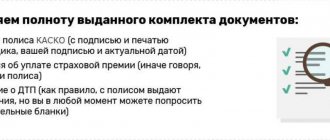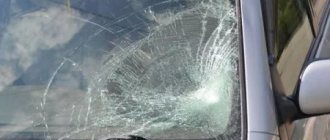Publication date: 03/04/2019 Number of views: 5701
Author: Ermakov Andrey Valerievich Lawyer, partner of the Legal Agency of St. Petersburg Articles written: 20
The situation when an insurance company files a lawsuit against the culprit of an accident in order to recover material damage based on the compensation paid to the injured party is becoming more and more common every year. If previously relatively little-known organizations that had close ties with collection agencies committed similar sins, today you can get a claim for subrogation or recourse from almost any insurance company. Recently, there has been increased activity on the part of the insurance company, which is trying to compensate for its losses under CASCO or OSAGO contracts by filing lawsuits against those responsible for the accident. There is a trend: if the accident occurred in 2015 or 2021 (the statute of limitations is about to expire), and the amount of paid material damage exceeds 100-120 thousand rubles, you can expect a quick summons from the court. There are many explanations for this: the unstable economic situation in the country, a sharply increased number of vehicles, competition in the market, tightening legislation in the field of insurance companies. In order to somehow preserve their assets and not become bankrupt, they are forced to resort to subrogation and recourse claims. What to do if the insurance company sues the person responsible for the accident, what is the difference between recourse and subrogation, is it possible to reduce the amount of payments for a lawsuit and how to protect your property rights? Answers to these and related questions are provided by professional lawyers in the field of insurance law and civil law.
What is subrogation under CASCO?
Subrogation under CASCO is usually understood as circumstances that allow the insurance company to demand a certain amount of compensation from the culprit of the accident.
There are 2 options for subrogation:
- If the amount of compensation is less than 400,000 rubles, the claim will be sent to the liability insurance company of the person responsible for the accident.
- If the amount of compensation exceeds 400,000 rubles, the claim goes to the culprit himself.
How does comprehensive insurance recover money from the person responsible for the accident? This is done as follows:
- The owner of the CASCO policy will not charge the person at fault for the accident. The injured party will receive the necessary payments from the insurance company with which it has a contract.
- Once a client's injury is covered, the insurance company has the right to subrogation. This allows the insurer to recover money from the person who caused the accident.
- If the at-fault driver has a third party insurance policy, the at-fault driver's insurance company will pay out.
The longer a car's lifespan, the cheaper it is. This means that at the time of the accident the car will be worth less than when you bought it. However, this does not change the fact that only new parts will be used to restore the car.
The insurer has the right to subrogation only if the damaged vehicle has a CASCO policy. In case of liability to third parties, the insurance company is obliged to cover all repair costs at its own expense.
However, these are not all the conditions that must be met for subrogation:
- The insurer paid the client the necessary amount to restore the car and fulfilled all other obligations under the contract between the parties.
- The person at fault does not have liability insurance or the amount of damage exceeds the maximum allowable payment.
The court will consider a subrogation case only if no more than three years have passed from the occurrence of the insured event to the filing of the claim. If this period was violated by the insurer, the claim against the person responsible for the accident will be invalid.
The limitation period is established by law. This term is usually understood as the period of time during which a citizen can file a claim in court.
The Civil Code of the Russian Federation spells out all the issues related to subrogation. If we turn to Article 965 of the Civil Code of the Russian Federation, then subrogation can only be applied if there is a property insurance agreement.
If there are no grounds for subrogation or the implementation of this procedure contradicts the norms of Russian legislation, such a mechanism cannot be used. Otherwise, the contract will be officially declared invalid. The car owner will only have to defend his interests in court by filing a lawsuit.
If we turn to practice, most drivers try to overestimate the amount of damage caused to their car as a result of an accident. Thus, they deceive not only their insurance company, but also the person responsible for the accident.
It is possible to avoid subrogation, but the following recommendations must be followed:
- It is prohibited to violate traffic rules while driving.
- The contract with the insurer is concluded for the maximum possible amount.
- If you receive a subrogation claim, it is better not to hesitate. It is necessary to contact a specialist and get advice.
- If you are at fault in a car accident, you should not avoid the investigation process. This is especially true when it comes to assessing property damage.
First of all, it’s worth saying right away that without the help of a professional it will be extremely difficult to solve the problem on your own. This is due to the fact that a person who is not knowledgeable in such matters will not be able to fully understand the claim received, as well as determine how legitimate the claims of the insurance company are.
To protect yourself from subrogation in advance, you must take out third party insurance. This will allow you to pay compensation not to the person who caused the accident, but to his insurer.
The MTPL policy is not cheap, but its owner does not need to worry about having to pay the full subrogation.
There is a case when the claim for subrogation on the part of the insurer cannot be considered justified. The initiator of the accident must insist in court on an investigation to prove the guilt of the other participant in the accident. If this fact is confirmed, then you will not have to pay.
First, it is important to understand what exactly the term “subrogation” means.
Here's an example. A driver with a CASCO policy gets into an accident. The traffic police found him not guilty of the accident. He received a full payment from the insurer under CASCO in the amount of 638,000 rubles.
The insurance company then sought subrogation from the at-fault company because it had a right of claim, and received compensation in the amount of RUB 400,000, the maximum possible amount. They wanted to recover the remaining 238,000 rubles from the culprit of the accident.
Recovery period
The procedure for restoring the limitation period for CASCO insurance is also not established in the current legislation. Experts advise acting in accordance with the following scheme:
- Make sure that the statute of limitations has passed. To do this, you need to find out from what moment the period begins to be calculated. Perhaps the time to apply has not yet expired.
- Prepare a package of documents confirming that the application period was missed for a valid reason.
- File a claim in court. A citizen has a similar right, regardless of whether he missed the statute of limitations for CASCO or applied on time. Until the defendant or plaintiff declares that the time for filing an appeal has expired, the case is considered as usual. On its own initiative, the court does not have the right to refuse to consider a citizen’s case because the statute of limitations has passed.
- Provide documents confirming the fact that the time allotted for the appeal was missed for valid reasons, if the defendant notified the commissioner about the missed period of limitation. The requirements will be satisfied if the plaintiff, during the period allotted for the appeal, was in a helpless state, was illiterate, seriously ill or faced force majeure circumstances.
- Prepare an application requesting the restoration of the statute of limitations under CASCO. It is compiled in accordance with the standards of office work norms. The document must refer to Article 205 of the Civil Code of the Russian Federation. The application must be signed and contain the date of preparation.
- Wait until a decision is made to restore the circulation period. If the court agrees to satisfy the requirements, subsequent proceedings will follow the standard scenario.
When does subrogation arise?
Vehicle owners only learn what subrogation is when they cause an accident. After all, CASCO, and not liability to third parties, is insurance of a car as property.
If the culprit has a compulsory motor liability insurance policy within the limits of the law, it will cover part of the costs. However, do not forget that payments for a mandatory product are strictly limited. It is no secret that there are many expensive cars on the roads, and the amount of damage may exceed the limit of payments under the liability insurance contract.
How to calculate the limitation period for CASCO insurance?
To correctly calculate the beginning of the limitation period for CASCO insurance, it is necessary to set the start date for its calculation. It could be:
- The period for providing the insurance premium, which is specified in the contract.
- The moment the insurance amount is not credited to the vehicle owner's account in full.
- From the date of submission of demands for payment. The rule applies if the contract does not establish a clear deadline for consideration of the application and transfer of compensation.
- The moment the contract expires, if, while it was valid, the insurer did not consider the applicant’s request and did not provide compensation.
- The date of receipt of the refusal from the insurance company to transfer the due payment amount.
Little secrets to help you win an argument
Let's start revealing the secrets by telling you what tricks and manipulations insurers use to achieve success. Here, for example, is one of their favorite ways.
This means that they take the case to court when the statute of limitations on subrogation has already expired. They do this on the basis that it was a long time ago; the documents of the person responsible for the accident may not have been preserved, since almost three years have passed.
In addition, people do not like to go to court and most likely will not do so. And this is a mistake. Even if the statute of limitations has expired, you only need to go to court, at least to find out that the period has expired.
There are other options. By contacting a law firm, you can learn a lot of new things. Call us!
And finally, some advice for the future. Protect yourself and sign a voluntary motor insurance contract. Thanks to this, you will avoid unnecessary waste of time, money and nerves.
What to do if the statute of limitations for CASCO insurance has expired?
It is not always possible to go to court on time. You can try to restore the missed statute of limitations under CASCO. The possibility is enshrined in Article 205 of the Civil Code of the Russian Federation. The legal act states that the time for filing an appeal can be restored if the citizen did not go to court earlier for good reasons. The list of situations recognized as such is not provided in the regulatory legal act. Because of this, the decision to restore the term is entirely within the power of the court considering the citizen’s appeal.
The citizen’s demands will be satisfied if during the required period the plaintiff was under treatment and could not initiate proceedings. In this situation, you will need to provide a certificate confirming this fact. It must be signed by an authorized person.
Another basis for restoring the limitation period under CASCO is the citizen’s location outside the state and the inability to find out the fact of violation of rights . In this situation, it is necessary to provide documents confirming the fact of being abroad. The absence of information about a rights violation is more difficult to confirm. In such cases, it may be necessary to provide documentation to prove that the notice was not received in a timely manner due to reasons beyond the plaintiff's control.
The court will agree to restore the period of appeal if the citizen served in the ranks of the armed forces of the Russian Federation or was on a business trip. A temporary suspension of the law or a moratorium by the Russian government will also be a reason to restore the circulation period.
The decision to restore the circulation period is made on an individual basis. However, you need to understand that lack of knowledge about the duration of the limitation period for CASCO insurance is not a valid reason. In this case, the citizen will be denied renewal of the period.
Subrogation in case of an accident: legal basis
In order to have the right to demand compensation from the at-fault driver for the costs incurred to restore the vehicle to its previous condition, the insurer of the at-fault driver must confirm the existence of prerequisites for subrogation in the situation arising as a result of the accident.
To do this, he will need to attach certain documents to the pre-trial or payment claim (depending on which procedure is used to resolve the dispute):
- Confirmation of the fact that the insurer has spent funds in a certain amount, as well as the validity of the expenses:
- Checks, receipts, payment orders, service agreements, etc.;
- photographs and videos taken at the scene of the accident;
- expert opinion establishing the amount of damage and the cost of replacement.
- Confirmation of the guilt of the person to whom the subrogation claim is made:
- accident report;
- resolution in a case of an administrative offense;
- the court's decision.
- Confirmation of the insurer's right to subrogation:
- a copy of the policyholder's statement about the occurrence of an insured event;
- a copy of the vehicle registration certificate and CASCO policy of the injured party.
If the insurer does not provide such documents, the at-fault party may request them independently by submitting a written request. The insurer's refusal to confirm the validity of the claim is grounds for denial of subrogation.
If the culprit does not agree with the amount of the claim, he can contact an independent appraiser, who, based on the information provided, will draw his own conclusions about the true cost of car repairs.
How to avoid paying subrogation: recommendations
Within the framework of CASCO, subrogation can vary by tens of thousands of rubles, depending on the scale of the damage caused. Therefore, not every family’s budget can handle the additional expenses.
At the same time, in disputes over CASCO you can and should defend your own position.
Here are some useful tips that will be useful to car enthusiasts::
- If the insurer filed a claim only 3 years after the accident, it is required to insist on the expiration of the statute of limitations. A written statement about this is made.
- When there are doubts about the costs incurred by the insurance company, a petition is filed for an independent examination.
- If the culprit has a compulsory motor liability insurance policy, subrogation is only possible in excess of the maximum payment amount. At the moment it is 400 thousand rubles. Therefore, it is advisable to check the insurance agency's calculations.
- You need to provide the court with as much evidence as possible of your own innocence. Your own calculations are also allowed.
- When a person has access to a car, but is not included in the CASCO policy, this gap should be filled.
The above are just a few examples from judicial practice. Additional precedents can be found if necessary. The advice of a competent car lawyer will also help.
Pre-trial proceedings
As practice shows, initially insurance companies try to recover their money voluntarily and draw up a pre-trial statement of claim, which is sent to the guilty party.
This is important if no more than 2 years have passed since the accident. Otherwise, the insurer will not waste time and will immediately take the case to court.
If we are talking about a pre-trial statement of claim, then this is a document that prescribes:
- date and time of the incident;
- the identity of the culprit;
- characteristics of the vehicle that caused the damage;
- the amount of damage taking into account depreciation;
- return date;
- A clear explanation of why the insurance company is asking you to transfer funds;
- details of the insurer and name of payment.
In addition to a well-drafted claim, the financial company must attach a statement indicating the amount of payments made to the injured party. The act must be signed and sealed by an authorized employee.
When it comes to paying, seasoned experts advise taking your time. After receiving the letter, you should first check whether the amount indicated corresponds to the actual amount paid. If everything is satisfactory, but the amount of compensation is large, then you should contact the office of the financial company and write an application addressed to the director, in which you ask for an installment plan. In the application you must write:
- return conditions;
- date of crediting funds to the insurer's account;
- determine the income from which the debt will be repaid.
For example, a debt payable is 60,000 rubles: I ask for an installment plan of 6 months. Every month, from the 10th to the 15th of the month, I undertake to deposit an amount of 10,000 rubles. These funds will be paid from the salary I receive during this period.
As practice shows, in most cases, insurers accommodate such clients halfway and are ready to accept payment in equal installments.
Recovery of damages through subrogation under CASCO insurance
First, it is important to understand what exactly the term “subrogation” means.
Here's an example. A driver with a CASCO policy gets into an accident. The traffic police found him not guilty of the accident. He received a full payment from the insurer under CASCO in the amount of 638,000 rubles.
The insurance company then sought subrogation from the at-fault company because it had a right of claim, and received compensation in the amount of RUB 400,000, the maximum possible amount. They wanted to recover the remaining 238,000 rubles from the culprit of the accident.
Calculation
To calculate the limitation period for CASCO insurance, you must adhere to the following instructions:
- Specify the end date of the period allocated for the implementation of specific obligations.
- Take the next day as the starting point for going to court.
- Recognize as the last day the date from which 2 years have passed (3 years in cases established by law).
The main problem lies in the first point and the second point - many interested citizens have many questions about establishing the starting point for the period of filing a claim under CASCO.
How to avoid subrogation payments
How to avoid subrogation under a comprehensive insurance policy and how to avoid payments?
In fact, there are several options, but, as a rule, the essence comes down to one.
You need to make sure that the amount paid under the MTPL agreement is sufficient to cover the insured event. This is not an easy task, but our professionals cope with it in many cases.
Actions to correct the situation should be aimed at reducing the total amount of compensation for damages in an accident. Is it possible to reduce the amount?
Let's briefly list the possible options:
- Appealing the decision contained in the conclusion of the traffic police. The idea is to arrive at mutual blame or shift the blame to the other party involved in the accident.
- Challenging the conclusion about the cost of repairing a damaged car.
At this stage, it should be said that the conclusion of independent experts often leads to different conclusions than those reached by traffic police officers or insurers. So there is a chance.
Limitation periods for car repairs at a service station
The specifics of calculating time limits for this category of claims are defined in Article 725 of the Civil Code of the Russian Federation and are as follows:
- claims regarding the quality of repairs are made no later than 1 year after their completion;
- if repairs are carried out in parts, then 1 year begins to be calculated from the date of acceptance by the customer of the entire volume of work performed;
- If a car repair contract includes a warranty, the one-year statute of limitations begins from the date of expiration of such a warranty.
In what cases does the person responsible for the accident compensate for the damage themselves?
Federal Law No. 40-FZ “On civil liability insurance of vehicle owners” dated April 25, 2002 provides that compensation for losses incurred as a result of a road traffic accident is paid by the insurer responsible for the incident. The same law gives insurance companies the right to bring a recourse claim against the person who caused the accident and because of which the insurer suffered material damage. However, a recourse claim can be made only in certain cases, directly specified in Article 14 of the Law “On Compulsory Motor Liability Insurance”:
- the culprit of the accident intentionally caused harm to the life and health of the victim;
- the person who caused the accident was under the influence of alcohol or drugs at the time of the collision;
- the person responsible for the accident did not have the right to drive a car (driving without a license);
- the driver at fault fled the scene;
- the culprit is not insured by third parties for this vehicle (or the accident occurred during a period not covered by the third party insurance policy);
- the accident report form was not sent to the insurer within 5 working days after the accident;
- within 15 days after the accident, if this is not recorded in the traffic police documents, the driver repaired the car, sold it for scrap or refused to provide it to the insurance company for inspection;
- the diagnostic card was no longer valid at the time of the accident (only for vehicles intended for the transport of passengers and dangerous goods);
- The person at fault for the accident provided deliberately false information when applying for an electronic MTPL policy, which led to a reduction in the insurance premium.
In essence, a recourse claim is the recovery by an insurance company of losses arising as a result of an insured event from its own client, if this client has violated the requirements of the Road Code or the Code of Administrative Offenses of the Russian Federation, and also neglected the conditions stipulated by the MTPL (negligent liability) insurance contract.
VS: Subrogation and recourse give rise to various legal consequences
On April 14, the Supreme Court issued Ruling No. 304-ES18-23831(6.7) in case No. A67-4006/201 regarding the replacement of the claimant for damages with a person who repaid the debt to the creditor for the co-injurer.
In the bankruptcy case of Magnit M LLC, its participant Oksana Podkorytova filed a lawsuit to recover damages from the former managers of the debtor - Alexey Feshchukov and Svyatoslav Zeman. The arbitration court satisfied the claim and jointly and severally recovered 13.4 million rubles from Zeman and Feshchukov, as well as 12.8 million rubles. in solidarity with them and two other citizens.
In this regard, the Magnit M company, at the direction of Svyatoslav Zeman, transferred 13.4 million rubles to the debtor. to pay off the first joint obligation. At the same time, Svyatoslav Zeman’s relationship with the Magnit M company was formalized as a borrowed one. Subsequently, the bankruptcy case against Magnit M was terminated due to the satisfaction of the creditors' claims.
Next, Svyatoslav Zeman applied to the court to replace the claimant, the Magnit M company, with him in order to recover half of the debt (6.7 million rubles) from Alexey Feshchukov on a claim for damages.
The court of first instance satisfied the demand, indicating the transfer of rights to Svyatoslav Zeman due to his fulfillment of the debtor’s obligations. Nevertheless, the appeal overturned the court's ruling, refusing to replace the claimant due to the lack of legal grounds for material and procedural succession. The district court did not agree with the conclusions of the appeal and supported the position of the first instance, pointing to the formal approach of the appellate court in resolving the issue of procedural succession.
In her cassation appeals to the Supreme Court, Oksana Podkorytova asked to cancel the decision of the district court and deny Svyatoslav Zeman procedural succession. In her opinion, the district court accepted her cassation appeal for consideration, ordered a judicial review, but never considered this document, and therefore her constitutional right to judicial protection was violated. The applicant added that the district court’s ruling did not evaluate the arguments that Svyatoslav Zeman did not fulfill his obligation to compensate for damages, and the courts’ conclusions to the contrary violate her rights as the initiator of an indirect claim in defense of the interests of the Magnit M company.
In turn, Alexey Feshchukov insisted on the cancellation of judicial acts on a separate dispute and sending it for a new trial to the court of first instance. Both applicants also relied on the district court’s violation of Art. 325 of the Civil Code, since with the fulfillment of obligations by the joint and several co-defendant, the main obligation to the creditor ceased, and with the termination of the material legal relationship there were no grounds for procedural replacement.
The Judicial Collegium for Economic Disputes of the Supreme Court confirmed that the district court, having previously accepted Oksana Podkorytova’s cassation appeal, did not make any decision on it, as follows from the contents of the cassation resolution. Thus, the Supreme Court revealed a violation of the applicant’s constitutional right to judicial protection, which cannot be eliminated in a subsequent instance.
The Supreme Court added that in a separate dispute, the requirement for procedural succession is based on the position of Svyatoslav Zeman, who believed that the transfer of 13.4 million rubles to Magnit M LLC. he repaid the losses caused jointly with Alexey Feshchukov. At the same time, these actions of Svyatoslav Zeman (if proven) entailed the termination of the obligations of both joint and several debtors and by virtue of clause 2 of Art. 325 of the Civil Code of the Russian Federation granted him the right to go to court with a separate claim against Alexey Feshchukov to recover in his favor the amount of damages attributable to the latter according to the rules of recourse.
As the Supreme Court explained, seeking judicial protection in one form or another (subrogation or recourse) is not an exclusively formal approach to compliance with legal norms, since each of these methods entails different legal consequences. “So, in particular, there may be differences in the courts to whose competence and jurisdiction a particular dispute is assigned, and everyone’s right to a competent court is guaranteed by the Constitution of the Russian Federation (Part 1 of Article 47). In addition, the transfer of the rights of the creditor in the event of a change in the person in the obligation, as a general rule, automatically provides the new creditor with the entire scope of the rights of the original (clause 1 of Article 384 of the Civil Code of the Russian Federation), while the recourse claim of one co-damager to another allows the division of responsibility between them, including by determining unequal shares in the compensation paid to the victim. The beginning of the limitation period is calculated differently. Having recognized the position of Svyatoslav Zeman as justified, the district court, in essence, allowed him to arbitrarily, of his own free will, determine the share of responsibility attributable to Alexey Feshchukov, which is unlawful,” the ruling noted.
As the Court noted, the legal consequences of the fulfillment of the obligations of the guarantor to the creditor and the obligations of a joint and several debtor who jointly caused harm to the creditor are not similar. So, paragraph 1 of Art. 365 et al. 3 p. 1 art. 387 of the Civil Code of the Russian Federation establishes that the rights of the creditor under this obligation are transferred to the guarantor who has fulfilled the obligation by force of law. In relation to the causer of harm who has fulfilled a joint and several obligation, such a rule has not been established; such a person enjoys the right of recourse against co-causers (subclause 1, clause 2, article 325 of the Civil Code of the Russian Federation). Accordingly, the conclusion of the district court to replace the Magnit M company with Svyatoslav Zeman as a legal successor according to the rules of subrogation is untenable. Thus, the Supreme Court overturned the district court's decision and returned the case to it for a new trial.
Lawyer, partner of the law firm Tenzor Consulting Group Anton Makeychuk explained that the conclusions of the RF Supreme Court touch on two points: “Firstly, the Supreme Court corrected the organizational error of the cassation court, which simply did not consider the filed complaint by one of the co-cassators. Secondly, the Court corrected a theoretical error by recalling the difference between subrogation and subrogation. By and large, the ruling of the Supreme Court was a good reminder to all law enforcers, including judges, of the theory of civil law by inverse demand, since in the practice of lower courts there are acts in which these concepts were confused,” he is convinced.
The expert called it important for the Supreme Court to justify that the differences between recourse and subrogation are not formal, but have different legal consequences. “As an additional example of the application of recourse rules, we can cite a case in which a company compensates for damage caused by its employee during work. At the same time, the Supreme Court also correctly indicated that the rule on surety, in which the entire claim passes to the guarantor if he fulfills his obligation for the main debtor, is not applicable in this case, since in relation to the co-injurer who has fulfilled the obligation, such a rule is not directly stated by law provided,” Anton Makeychuk emphasized.
Partner at Bartolius Law Firm Alexey Tolmachev also noted that the Supreme Court once again recalled the difference between subrogation and recourse. “As follows from the canceled ruling, this question was also asked by the district court. The Supreme Court indicated that the use of subrogation instead of recourse led, first of all, to a violation of the right to a competent court and an arbitrary determination of the amount of liability of a co-harmmaker. At the same time, different limitation periods can hardly violate the rights of the defendant, since in case of recourse the period is not calculated in his favor,” he explained.
According to the expert, the district court concluded that the cancellation of the judicial act in order to consider the claim for recovery of the same amount in a lawsuit was a manifestation of legal purism. “Why create a new trial with the same participants and the same outcome, since the evidence can be assessed in the present case? Since Svyatoslav Zeman (regredient) and Alexey Feschukov are not individual entrepreneurs, the competent court when considering a new recourse claim, apparently, should be a court of general jurisdiction. The word “competent” to these courts, unfortunately, can often only be applied in the meaning from the commented definition. As for the amount of damage, by virtue of Art. 325 of the Civil Code, the shares of joint and several debtors are assumed to be equal, and it was in this part that the lower courts allowed succession. The defendant could have declared extraordinary circumstances preventing the collection of half the debt in the arbitration court,” noted Alexey Tolmachev.
He added that the need to cancel judicial acts was not obvious. “However, one cannot fail to mention one circumstance, which is not possible to assess due to the lack of case materials. “The regredient fulfilled its obligations to the lender Magnit M LLC through a loan received from the Magnit company. Perhaps this also, in the absence of affiliation between the regressor and these persons, influenced the court’s decision,” the expert suggested.
How is damage recovered during subrogation?
The insurance company that has paid compensation to the victim under the CASCO agreement, in accordance with Article 965 of the Civil Code of the Russian Federation, acquires the right to claim the paid insurance amount from the person through whose fault the accident occurred, that is, the right of subrogation.
In practice, the collection of compensation by way of subrogation from the culprit of an accident is carried out by the insurance company in accordance with the principles of the share procedure set out in paragraph 2.
CIVIL PROCEDURE CODE OF THE RF. Before filing a claim, the insurer sends the plaintiff a request for voluntary reimbursement of the amount of insurance compensation paid.
The claim should state the reasons for the claims made by the insurance company and indicate the deadline for their fulfillment.
If the at-fault party does not satisfy the demands of the claim, after some time a claim for subrogation arises.
In accordance with Article 56 of the Civil Procedure Code of the Russian Federation, the plaintiff-insurer must prove the basis of his claims against the defendant-accident.
Otherwise, the claim may be denied.
A claim for damages through subrogation must contain evidence confirming the following:
- The fact of concluding an insurance contract and its conditions.
The damage notice must be accompanied by a CASCO insurance agreement (insurance policy) valid at the time of the accident, and the insurance rules.
- The fact of the occurrence of an insured event under an insurance contract.
An insured event is the occurrence of a traffic accident, which is confirmed by materials prepared by an employee of the road safety inspection in accordance with the requirements of the law.
- The amount of damage caused to the insured vehicle.
This circumstance will be confirmed by a vehicle examination (assessment) protocol, and in the case of receiving insurance compensation in the form of vehicle repairs - by an estimate of the costs of repairing the damaged vehicle, and acts of acceptance of the work results.
- The fact of actual payment of insurance compensation and its amount.
Proof of this will be payment documents confirming the transfer of money to the policyholder or the company that repaired the damaged car;
- The guilt of the defendant and the existence of a cause-and-effect relationship between the damage and the unlawful behavior of the offender.
The totality of these circumstances is confirmed by decisions of competent officials of state bodies or the court that have entered into legal force to bring the participant in an accident to administrative or criminal liability.
It is important to note that all of the above circumstances must be confirmed by evidence when filing a claim in pre-trial order.
Subrogation in case of mutual fault
All participants can be at fault in an accident. Therefore, clarification of relations with insurance companies issuing policies may have its own characteristics. Many courts agree that compensation is distributed in a 50/50 ratio.
Participants in cases of mutual fault subrogation can be not only the participants in the accident, but also insurance companies.
As confirmation, we can cite the decision of October 10, 2012, issued by the Tenth Arbitration Court of Appeal in case No. A41-14142/12. The panel of judges decided that the costs between the organizations for compensation are divided in half.
There is one more point. When both drivers are involved in an accident, examinations are ordered. The court ultimately distributes the costs in accordance with the degree of their guilt (for example, 65 to 35 percent).
In addition, the courts always, in cases of mutual guilt, determine the degree of involvement of each participant in the accident. It is usually expressed as a percentage. Therefore, they do the same with subrogation.
Is there a statute of limitations?
A CASCO claim filed after the expiration of the statute of limitations must not exceed 36 months.
This period begins from the moment of documentary confirmation of the insured event. It does not expire even if your insurance has expired.
During this time, you should retain your insurance policy, contract, and any documentation of the covered event, as this can significantly reduce your recourse for damages.
If the injured party's insurer files a claim three years after the accident, you will not be able to legally recover from the claim. All you need to do is present documents and confirm that the statute of limitations for recourse claims has expired.
It is important that all drivers know their responsibilities and rights so that they can protect themselves in unexpected situations and even avoid getting into them.
To do this, you need to familiarize yourself with the current Russian legislation, carefully study all the conditions and requirements of insurers and learn about compensation mechanisms.
This will help protect yourself from unexpected expenses on particularly large scales. But first of all, it is necessary not to ignore the rule for drivers and not to violate traffic rules, so as not to cause unpleasant incidents.
Types of limitation periods
There are several varieties of the concept of “limitation period”. Thus, the period concerning the filing of a claim is judicial. He is recognized as a law-creator and a law-changer. Prescription is imperative. However, it also contains dispositive features. There is no date limit. It is only important to go to court within 3 years from the date of receiving information about a violation of rights.
Proceedings can be administrative or civil. Additionally, there is a period of self-defense and rapid response. The limitation period itself can be special or general. As mentioned earlier, in the second case, the duration of going to court is 3 years. The period applies in all situations, unless other deadlines are established to resolve the issue. The minimum duration of the special limitation period is one year. The maximum value of the indicator can reach 10-30 years.
There are situations where there is no statute of limitations. However, this does not apply to disputes arising under CASCO and OSAGO. The period provided for filing a lawsuit is continuous, except in cases where it can be suspended. You can become familiar with such situations by studying Articles 202-203 of the Civil Code of the Russian Federation.
Differences between recourse and subrogation in the world of auto insurance
When it comes to car insurance, there are no distinctive features in these categories. In general, the main features of recourse and subrogation in relation to compulsory motor liability insurance and comprehensive insurance can be reduced to the following theses:
- transfer of the victim's right to receive compensation to the insurer only after the occurrence of an insured event provided for in the insurance contract;
- An agreement for the assignment of the right to claim compensation for damage caused by the perpetrator of a road traffic accident is considered concluded if there are clear grounds for determining the specific right in respect of which the assignment will occur. And even if the scope of the right cannot be determined or for some reason is not determined, the right can be assigned to a third party, namely the insurer;
- If the insurance company compensates the victim for damage in excess of the amount of insurance compensation under compulsory motor liability insurance, the insurer has the opportunity to demand compensation for damage from both the insurer of the guilty party and the guilty party itself.
In addition, it is worth mentioning a category such as private debt. This occurs when the debtor obligated to pay damages does not participate in the process of repaying the obligations. The new organization enters into the relationship by paying the obligations of the original organization. Thus, in such a relationship, the new debtor cannot apply either recourse or subrogation to the original debtor even after the obligations have been satisfied. This was approved by the Presidium of the Supreme Court.
How to determine that the statute of limitations has begun?
Until now, courts of various instances have not developed a uniform approach to establishing the starting point for such a period. There is an opinion that calculation should begin from the day the insured event occurred .
The judges explain this approach by saying that the client’s right to claim insurance compensation arises on the day of the accident that caused the person’s losses. Other judges defend the position that the limitation period begins to count from the day when the insurance company did not make the insurance payment or made it partially.
After all, only the company’s refusal to compensate for the client’s damage can lead to a violation of his civil rights.
Then the client has the right to protect his interests in court. This position is more convincing from a legal point of view.
The limitation period for CASCO insurance begins to run:
- from the moment of delivery of the written refusal to pay the amount of compensation;
- from the date of receipt of payment of compensation not in full;
- from the expiration date of the period for payment of compensation specified in the contract;
- from the moment the client applies for payment, if the terms for payment are not specified in the contract.
When, as a result of an insured event, harm is caused to human health , there are deaths or there is property damage, the statute of limitations increases to 3 years .
This rule indicates the priority for the legislator of disputes regarding compensation for harm caused to a person (injuries, disability, death, etc.), rather than disputes of a property nature.
Procedure for compensation of damages by way of subrogation
The Civil Code of the Russian Federation provides for compensation for damage through subrogation. The insurance company that provided insurance coverage to the victim on the basis of the CASCO agreement, in accordance with Article 965 of the Civil Code of the Russian Federation, has the right to demand the paid insurance amount from the person at fault for the accident, i.e. right of subrogation.
In practice, subrogation of the claim of the plaintiff, through whose fault the accident occurred, is carried out by the insurance company in accordance with the rules of the claims procedure introduced by § 2, Part.
There are agreements that allow the exercise of subrogation rights:
- The exact availability of a valid insurance contract, including CASCO.
- The amount of compensation cannot be higher than that which was paid to the injured party.
- At the same time, the amount that is compensated at the beginning of the loss to the victim must be the exact reason. If damaged parts of the old car were replaced after an accident, compensation is also calculated based on the damaged parts.
The procedure for offsetting losses under the right of subrogation is as follows:
- After the occurrence of an insured event, the injured party will seek compensation in accordance with the terms of the contract.
- After the insurance company has paid the claim, the insurer files a claim asking them to pay themselves up to the amount of the claim.
- Then everything is done through the court, the money is transferred to the offender who had these problems, there was not even any property to seize.
Cases and procedure for applying subrogation
Subrogation is most often used by CASCO insurance companies when damage to the car is caused by the fault of the policyholder. There are also some exceptions for which subrogation cannot be applied:
- When the person who caused damage to the property of the insured is a relative of the insured or pays benefits to him. This means that the insurance organization does not have the right to demand compensation for paid damages from the culprit - a relative of the victim.
- If the victim, who insured his car, for example, with CASCO, is the only participant in the accident, the insurer pays compensation based on the contract and does not have the right to demand subrogation expenses.
- But as soon as the insurer manages to prove the fact of intentional harm, the conditions will be canceled. This means that the insurer may also have a right to subrogation.
Subrogation
It is also worth mentioning the statute of limitations regarding subrogation. This concept means the transfer of the right of claim. If the insurer compensates for the damage, it subsequently has the right to demand repayment of the amount from the person who caused the damage.
Let's give an example. If an accident occurs and you are found to be at fault for the accident, as a result, all costs for car repairs are covered by your insurance company.
But after analyzing the road accident, it turns out that the accident was caused by the fault of the second driver.
Since your insurance company has already paid money for the insured event, the insurer can now turn to the person at fault for the accident with a demand for subrogation, that is, demand repayment of the debt.
If the debtor does not want to repay the debt to the insurance company voluntarily, then the insurance company can file a claim against the person responsible for the incident.
In the case of subrogation, not a special, but a general period of claim is established - 3 years.










